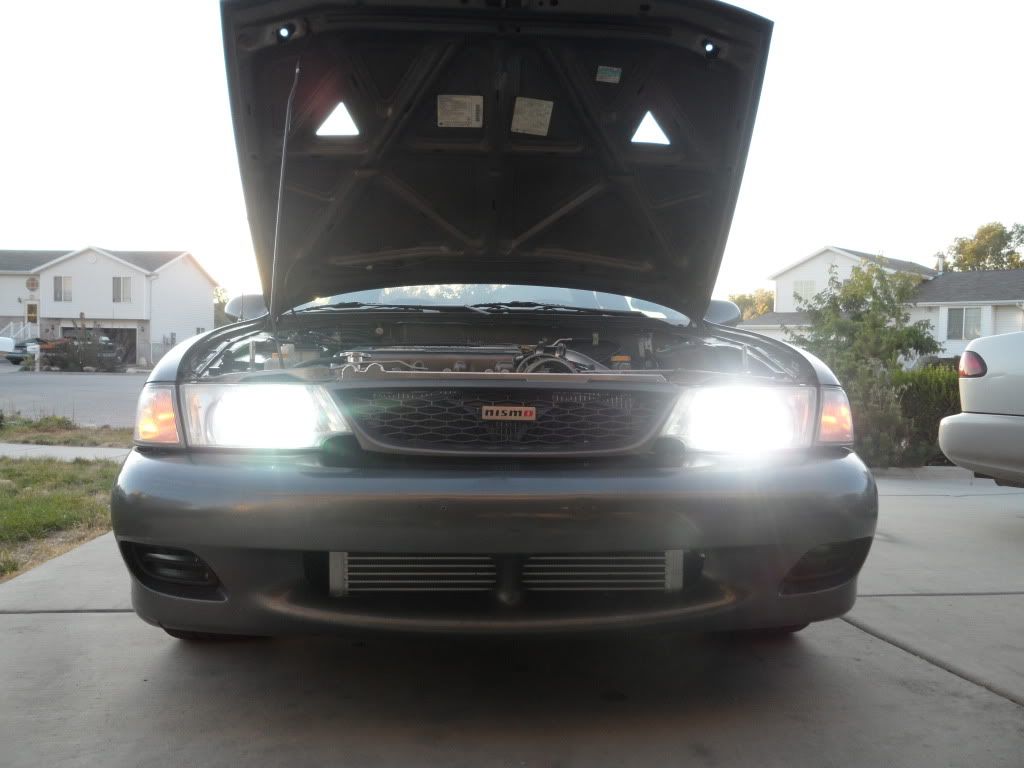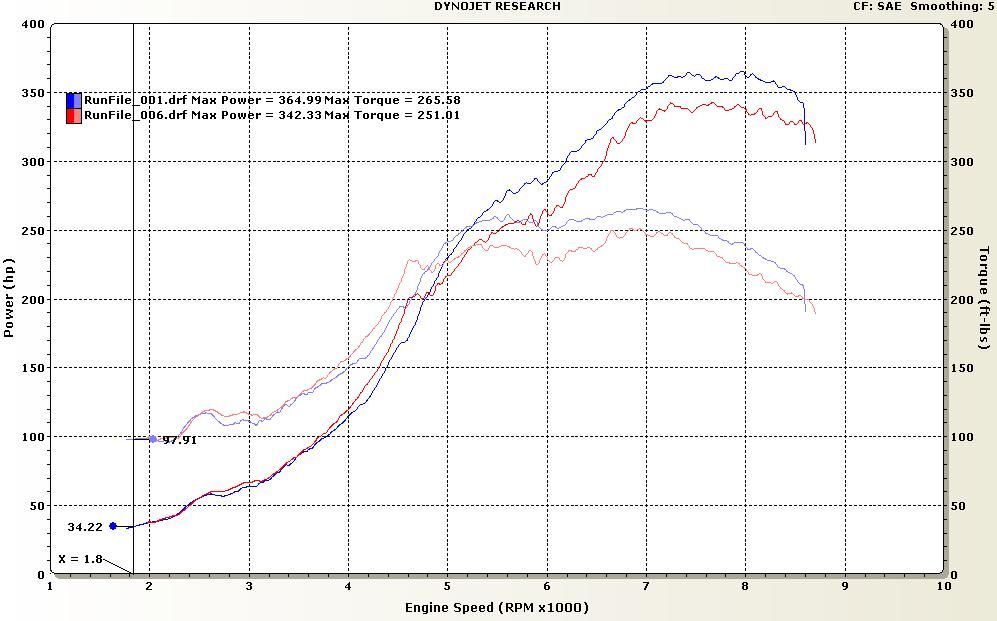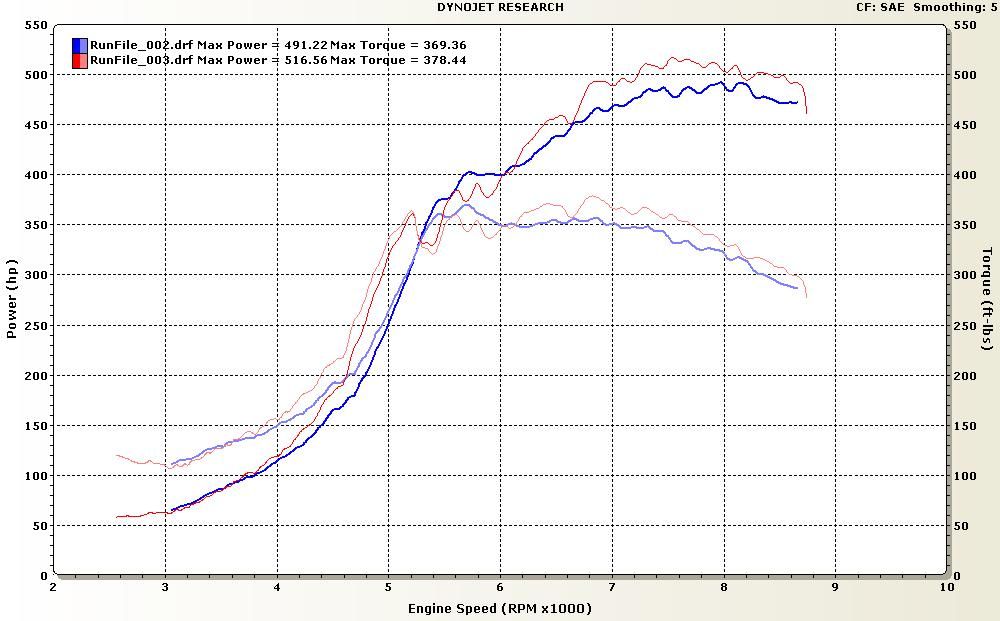Cam comparison 20V vs N1 "drop-in" results.
The Test: Drop in comparison between N1 and 20V cams.
The Dyno: Dynojet 248C upgraded to 2000whp capability.
Date: 4/25/2012
The Car: Coheed's Super Sentra

The Setup: 8.5:1 compression, tubular long runner manifold, Supertech springs and retainers, JWT computer, Stock head/intake manifold, Precision 6262 bb. And supporting mods.
Special Thanks to Vadim for making this test possible. Without his trust and temporary donation of N1 cams this test would not have been possible. big thanks to Fast-Times dyno services. JC allowed me to swap cams on the dyno to get the most accurate back-to-back results.
Runs were done 20V low, 20V high. Then N1 low, N1 high, then N1 low again. Due to some boost irregularity and some dyno mishaps, the N1 low had mixed results.
Dyno comparisons were done starting at 2000 rpm for low boost. Boost controller was set to its lowest settings. The boost did fluctuate slightly between runs, it was something out of my control. But runs were around 1-2psi of each other.
Here is the low boost runs: Blue is 20V, red is N1.

Results: The 20V cams performed amazingly well on low-boost of 11psi. 365whp compared to the N1 at 342whp. This is a difference of 23whp. For some reason, the N1 cams consistently under-performed to the 20V cams. Though boost was slightly lower by ~1psi, and there was some issues on the dyno, the 20V without a doubt made more power on low boost.
What couldn't be forseen however, is the bottom end power delivery. The N1 in every run produced more power on the bottom end, in various areas. I would like to do more testing with the N1 on low boost to see if I can get it to make what the 20V made. The issues on the dyno meant the N1 low boost had to happen after high boost pulls to get an accurate reading. However, this may have cause some slight heat soaking. More testing will be required on low-boost runs. I encourage others to post their results.
High boost runs are when things get really entertaining: Blue is 20V, red is N1.

The N1 cams outperformed the 20V here, generating 516whp on only 19psi boost on N1 and 491whp on 20V. A difference of 25whp. The N1 also didn't lose any bottom end to the 20V cams. There was a dip in power delivery on the N1 coming on boost. The power onslaught was so severe, boost went to 24psi momentarily before dropping back to 19psi. This caused a bit of spark blow-out. This was remedied by closing the gap and following up with another pull and it made 505whp. There was some heat-soaking going on for sure, but pull after pull the N1 made over 500whp on 19psi.
I encourage anyone else pursuing this kind of cam swap to do a comparison as well. The N1 cams don't seem to have any negative effects, if you can deal with less power on low boost. The N1 can switch ealier and start making power faster. The cams are extremely quiet on low, but scream like a banshee on high. They get 3x louder, they are flat out abnoxious.
Feel free to discuss. There are variables at play here, but it is what it is.
The Test: Drop in comparison between N1 and 20V cams.
The Dyno: Dynojet 248C upgraded to 2000whp capability.
Date: 4/25/2012
The Car: Coheed's Super Sentra

The Setup: 8.5:1 compression, tubular long runner manifold, Supertech springs and retainers, JWT computer, Stock head/intake manifold, Precision 6262 bb. And supporting mods.
Special Thanks to Vadim for making this test possible. Without his trust and temporary donation of N1 cams this test would not have been possible. big thanks to Fast-Times dyno services. JC allowed me to swap cams on the dyno to get the most accurate back-to-back results.
Runs were done 20V low, 20V high. Then N1 low, N1 high, then N1 low again. Due to some boost irregularity and some dyno mishaps, the N1 low had mixed results.
Dyno comparisons were done starting at 2000 rpm for low boost. Boost controller was set to its lowest settings. The boost did fluctuate slightly between runs, it was something out of my control. But runs were around 1-2psi of each other.
Here is the low boost runs: Blue is 20V, red is N1.

Results: The 20V cams performed amazingly well on low-boost of 11psi. 365whp compared to the N1 at 342whp. This is a difference of 23whp. For some reason, the N1 cams consistently under-performed to the 20V cams. Though boost was slightly lower by ~1psi, and there was some issues on the dyno, the 20V without a doubt made more power on low boost.
What couldn't be forseen however, is the bottom end power delivery. The N1 in every run produced more power on the bottom end, in various areas. I would like to do more testing with the N1 on low boost to see if I can get it to make what the 20V made. The issues on the dyno meant the N1 low boost had to happen after high boost pulls to get an accurate reading. However, this may have cause some slight heat soaking. More testing will be required on low-boost runs. I encourage others to post their results.
High boost runs are when things get really entertaining: Blue is 20V, red is N1.

The N1 cams outperformed the 20V here, generating 516whp on only 19psi boost on N1 and 491whp on 20V. A difference of 25whp. The N1 also didn't lose any bottom end to the 20V cams. There was a dip in power delivery on the N1 coming on boost. The power onslaught was so severe, boost went to 24psi momentarily before dropping back to 19psi. This caused a bit of spark blow-out. This was remedied by closing the gap and following up with another pull and it made 505whp. There was some heat-soaking going on for sure, but pull after pull the N1 made over 500whp on 19psi.
I encourage anyone else pursuing this kind of cam swap to do a comparison as well. The N1 cams don't seem to have any negative effects, if you can deal with less power on low boost. The N1 can switch ealier and start making power faster. The cams are extremely quiet on low, but scream like a banshee on high. They get 3x louder, they are flat out abnoxious.
Feel free to discuss. There are variables at play here, but it is what it is.
Last edited by Coheed
on 2012-06-17
at 03-57-27.











 Back to top
Back to top
